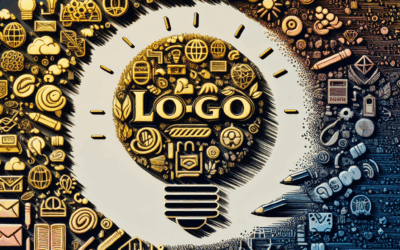Creating a brand is much more than just crafting a logo; it’s about storytelling, identity, and establishing a connection with your audience. A strong brand design sets you apart in a crowded marketplace, fostering loyalty and recognition among consumers. In this article, we’ll walk through the essential stages of developing a strong brand design, from initial concept to final creation.
Understanding the Importance of Brand Design
Why Brand Design Matters
In today’s digital landscape, brand design plays a pivotal role in distinguishing your business from competitors. A well-crafted brand design encompasses not just the visual elements but the emotional and experiential aspects of your brand. Companies with strong brand identities are often more successful, enjoying customer loyalty and a greater market presence.
The Elements of Brand Design
Brand design involves several core components, including:
- Logo Design: This is often the first impression consumers have of your brand and should effectively communicate its values.
- Color Palette: Colors evoke emotions and associations. Choosing the right hues can enhance brand recognition and influence consumer behavior.
- Typography: Fonts contribute to the brand’s voice. They should align with the brand’s personality and improve readability across various platforms.
- Imagery and Graphics: Visual elements should complement the overall design and message, reinforcing your brand’s identity.
Research: Laying the Groundwork for Your Brand
Define Your Brand’s Purpose
Before diving into design, it’s vital to articulate your brand’s purpose. What needs does it fulfill? Who is your target audience? Defining your brand’s mission and values lays a sturdy foundation for your design process.
Conduct Market Research
Understanding your competition is essential. Analyze successful brands in your industry. What design elements do they use? How do they communicate with their audience? This insight will help you identify gaps and opportunities for differentiation.
Create Buyer Personas
Developing detailed buyer personas enables you to tailor your brand design to resonate with your intended audience. Include demographic information, preferences, and pain points to guide design decisions.
Conceptualization: Generating Ideas
Brainstorming Sessions
Gather your team for brainstorming sessions to generate ideas and visual concepts. Encourage open dialogue and creativity, allowing for diverse perspectives to emerge.
Sketching and Prototyping
Begin sketching preliminary ideas and creating rough prototypes. This stage allows you to visualize concepts before refining them. Experiment with different elements like typography, color, and layout.
Gathering Feedback
Seek feedback from stakeholders and potential customers. Constructive criticism will help you understand how your concepts resonate. Be open to making adjustments based on this feedback.
Design Development: Bringing Your Ideas to Life
Choosing a Design Platform
Select the design software or tools that best suit your needs. Popular options for branding include Adobe Illustrator, Canva, and Sketch. Choose one that aligns with your team’s skill set and project requirements.
Refining Your Logo
The logo is a crucial aspect of your brand design. Ensure it encapsulates your brand’s essence and remains versatile across various applications. Test it in different sizes and formats to confirm its effectiveness.
Developing Brand Collateral
Once your logo is finalized, expand your brand design into collateral materials. This includes business cards, brochures, social media templates, and any other materials that represent your brand visually.
Implementation: Launching Your Brand Design
Create Brand Guidelines
Documenting your brand guidelines is vital for maintaining consistency. Include details on logo usage, color schemes, typography, and tone of voice. This document will ensure that everyone involved in promoting your brand adheres to a unified design language.
Update Digital and Physical Presence
Implement your new design across all platforms. Update your website, social media profiles, packaging, and promotional materials. Consistency across channels reinforces your brand identity and enhances recognition.
Monitor Feedback and Adjust
After launching your brand design, actively monitor feedback and engagement. Use analytics to assess the effectiveness of your brand’s presence. Be prepared to make adjustments as needed based on audience reception.
Conclusion: The Journey from Concept to Creation
Developing a strong brand design is an iterative and collaborative process that requires careful thought and strategic planning. From understanding the importance of brand design and conducting thorough research to conceptualization and final implementation, each step is critical in establishing a compelling brand identity.
As the landscape of consumer expectations evolves, it’s essential to remain adaptable and responsive to feedback. A strong brand design not only communicates who you are but also fosters an emotional connection with your audience, paving the way for lasting loyalty and success.
By investing the time and effort into developing a robust brand design, you position your business for growth and recognition in an increasingly competitive environment. Embrace this creative journey with an open mind, and let your brand’s story resonate with those you aim to serve.
At USA Marketing Pros, we specialize in transforming your online presence with superior web design, SEO, and digital marketing solutions. Based in Arlington, VA, we proudly serve businesses across Northern Virginia and the broader Washington, DC area. Get in touch with us today to see how we can help your business grow at (202) 888-5895 or visit us at 701 12th St S, Arlington, VA 22202.
Searching for Professional Logo Design? Discover our Logo Design Service
View all our Digital Marketing Services
Book a Logo Design Strategy Call




0 Comments